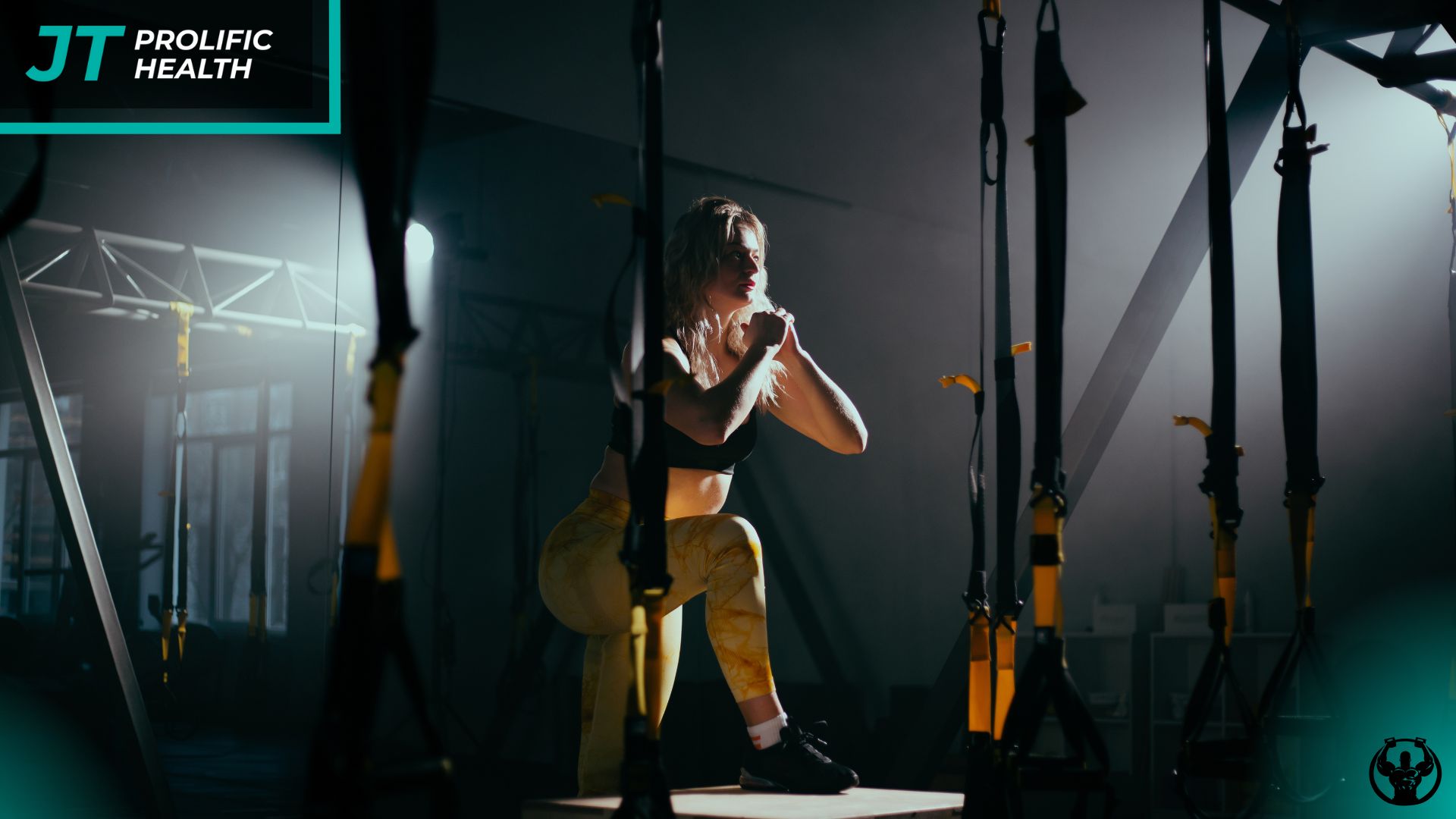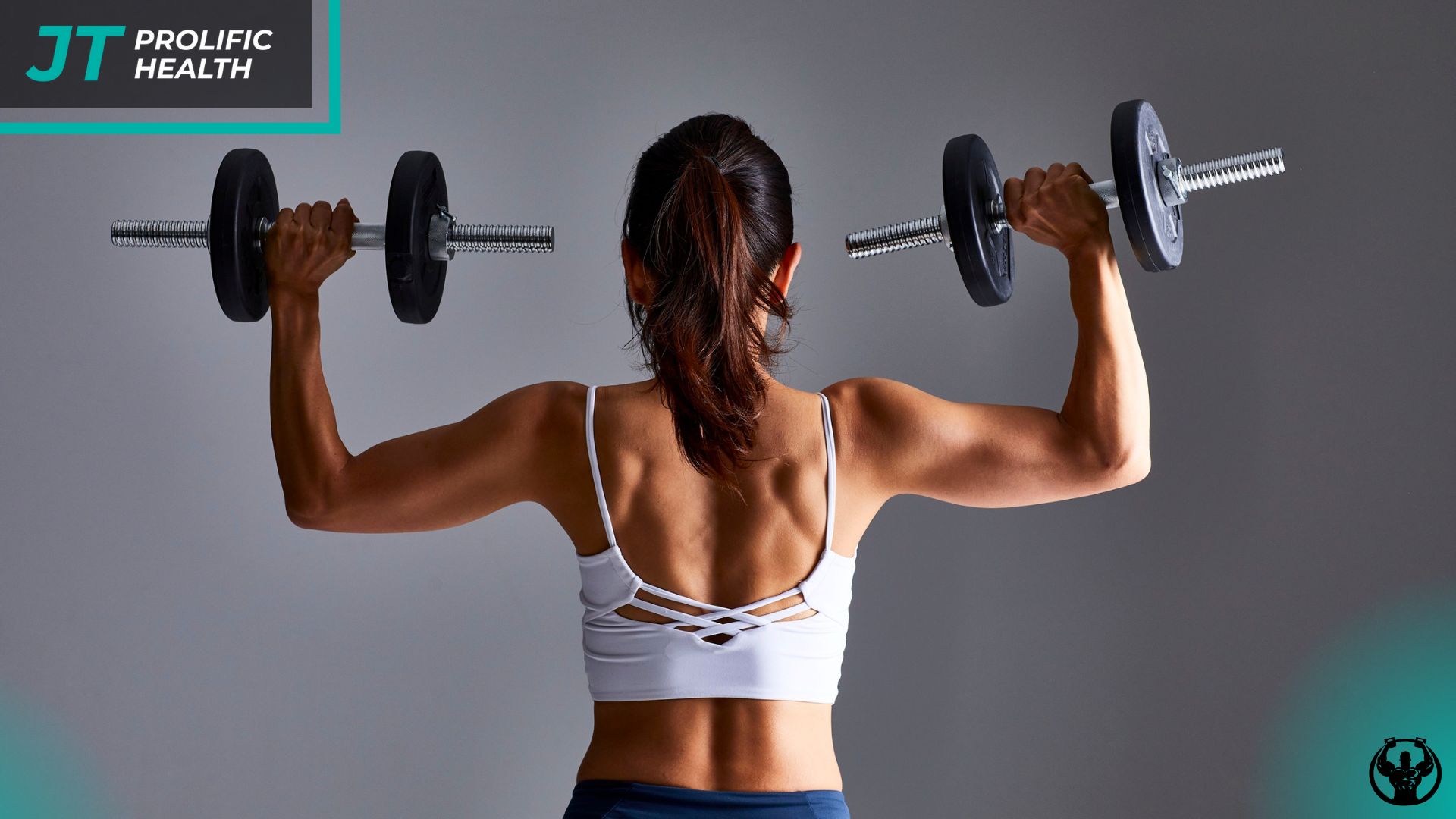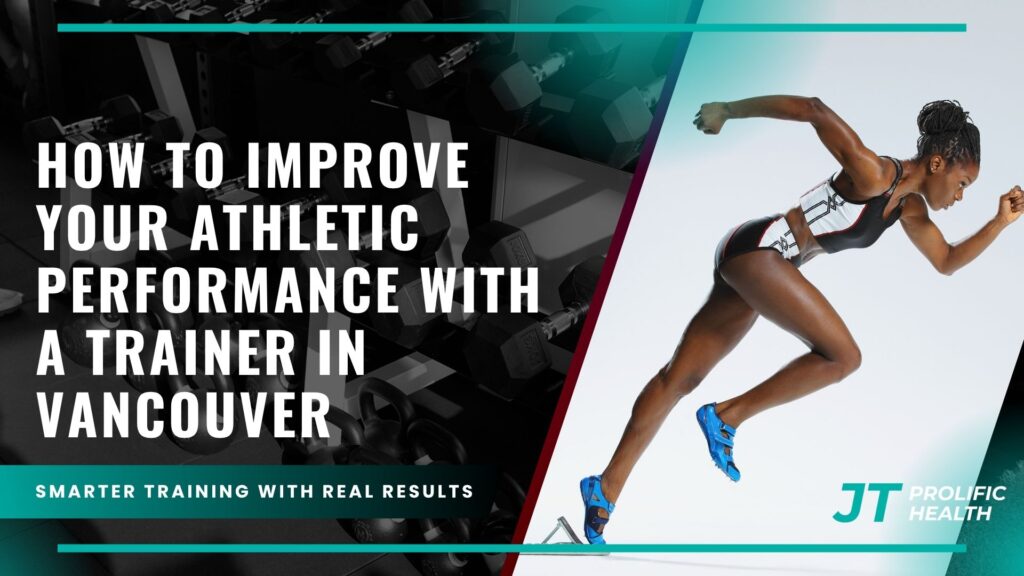Athletic performance is the culmination of countless hours of training, dedication, and strategic planning. Whether you’re a weekend warrior looking to improve your recreational sports performance or a competitive athlete aiming to reach the next level, the path to enhanced athletic ability requires more than just showing up to practice. In Vancouver’s vibrant fitness landscape, working with a qualified personal trainer has become one of the most effective ways to unlock your athletic potential and achieve measurable improvements in performance.
The science of athletic performance encompasses multiple interconnected systems within the human body, including cardiovascular endurance, muscular strength and power, flexibility, coordination, and mental resilience. Each of these components must be carefully developed and balanced to create the foundation for superior athletic performance. This is where the expertise of a skilled trainer becomes invaluable, as they possess the knowledge and experience necessary to assess your current abilities, identify areas for improvement, and design targeted interventions that address your specific performance goals.
Vancouver’s unique geographical setting, with its mountains, ocean, and diverse recreational opportunities, creates an environment where athletic pursuits are deeply embedded in the local culture. From cycling along the seawall to skiing on local mountains, from playing hockey in community rinks to running trails in Pacific Spirit Park, residents of this city have countless opportunities to engage in athletic activities. However, to truly excel in these pursuits and minimize the risk of injury, proper training methodology and professional guidance are essential.
The journey toward improved athletic performance is highly individualized, requiring a deep understanding of your sport-specific demands, current fitness level, injury history, and personal goals. A qualified trainer brings scientific knowledge, practical experience, and objective assessment capabilities that can accelerate your progress far beyond what you might achieve through self-directed training alone. They understand how to periodize training loads, when to push harder and when to allow for recovery, and how to integrate various training modalities to create synergistic improvements in performance.
Key Takeaways
For additional context, see this comprehensive guide.
- Comprehensive Assessment: Professional trainers conduct thorough evaluations of your current athletic abilities, movement patterns, strengths, and weaknesses to create a baseline for improvement and identify specific areas that need attention.
- Sport-Specific Training: Effective athletic performance enhancement requires training that mimics the demands of your specific sport or activity, incorporating similar movement patterns, energy systems, and skill requirements.
- Periodization Strategy: Trainers implement systematic training cycles that progressively build fitness while allowing for adequate recovery, preventing overtraining and optimizing performance gains over time.
- Injury Prevention Focus: Professional guidance helps identify and address movement dysfunctions, muscle imbalances, and risk factors before they lead to injuries that could derail your athletic progress.
- Mental Performance Coaching: Beyond physical training, experienced trainers help develop mental resilience, confidence, and focus that are crucial components of athletic success.
- Nutrition and Recovery Optimization: Comprehensive athletic performance improvement includes guidance on fueling strategies, hydration, sleep optimization, and recovery techniques that support training adaptations.
- Technology Integration: Modern trainers utilize advanced tools and technologies to monitor progress, analyze movement patterns, and make data-driven adjustments to training programs.
- Long-term Development: Professional trainers focus on sustainable improvements that build upon each other over time, rather than quick fixes that may compromise long-term athletic development.
Understanding Athletic Performance Enhancement

For additional context, see detailed information on this topic.
Athletic performance enhancement is a multifaceted process that involves the systematic improvement of various physical and mental capabilities that contribute to success in sports and physical activities. At its core, this process requires a deep understanding of exercise physiology, biomechanics, psychology, and the specific demands of individual sports or activities. When working with a trainer in Vancouver, you gain access to this specialized knowledge and the ability to apply it in a structured, progressive manner that maximizes your potential for improvement.
The foundation of athletic performance lies in the development of fundamental movement patterns and basic fitness qualities. These include cardiovascular endurance, which determines your ability to sustain effort over time; muscular strength and power, which enable you to generate force quickly and efficiently; flexibility and mobility, which allow for optimal range of motion and injury prevention; and coordination and balance, which facilitate precise and efficient movement execution. A skilled trainer understands how these qualities interact and can design training programs that develop them in a coordinated fashion.
One of the most significant advantages of working with a professional trainer is their ability to conduct comprehensive assessments that reveal your current performance level and identify specific areas for improvement. These assessments typically include movement screens to identify dysfunctional patterns, fitness testing to establish baseline measurements, and sport-specific evaluations that examine your ability to perform key skills and movements related to your chosen activity. This information becomes the foundation for creating a personalized training program that addresses your unique needs and goals.
The concept of specificity is crucial in athletic performance training. While general fitness is important, the greatest improvements come from training that closely mimics the demands of your sport or activity. A knowledgeable trainer understands the energy systems, movement patterns, and skill requirements of different sports and can design training sessions that transfer directly to improved performance. This might involve plyometric exercises for a basketball player to improve jumping ability, or interval training for a cyclist to enhance their ability to handle changes in pace during competition.
Customized Training Program Development


For additional context, see our in-depth resource.
The development of a customized training program represents the cornerstone of effective athletic performance enhancement. Unlike generic workout routines found online or in magazines, a personalized program created by a qualified trainer takes into account your individual characteristics, goals, limitations, and the specific demands of your sport or activity. This level of customization ensures that every training session contributes meaningfully to your overall development and that your time and effort are invested in the most effective interventions possible.
The process begins with a thorough analysis of your sport or activity to understand its physiological and biomechanical demands. For example, a soccer player requires different training emphasis than a swimmer or a rock climber. Soccer demands explosive power for sprinting and jumping, agility for changing direction quickly, and endurance for sustained activity over 90 minutes. A swimmer needs different types of strength and power, along with specific cardiovascular adaptations and technique refinement. Your trainer will analyze these sport-specific requirements and design training components that address each area systematically.
Periodization is a critical element of program development that involves the systematic planning of training cycles to optimize performance gains while managing fatigue and preventing overtraining. Your trainer will structure your program in phases, each with specific objectives and training emphasis. This might include a base-building phase focused on developing fundamental fitness qualities, a strength phase emphasizing maximal force production, a power phase integrating speed and explosiveness, and a competition phase that maintains fitness while allowing for peak performance. The detailed information on this approach can help you understand how professional trainers structure long-term development plans.
Progressive overload is another fundamental principle that guides program development. This involves gradually increasing the training stimulus over time to promote continued adaptations and improvements. Your trainer will carefully manipulate variables such as intensity, volume, frequency, and complexity to ensure that your body continues to adapt and improve. This progression must be carefully balanced – too little stimulus results in stagnation, while too much can lead to overtraining or injury.
The integration of different training modalities is essential for comprehensive athletic development. Your program will likely include strength training to build force production capabilities, cardiovascular training to enhance endurance and recovery, flexibility and mobility work to maintain optimal range of motion, skill-specific drills to improve technique and coordination, and recovery protocols to support adaptation and prevent burnout. Each component serves a specific purpose and contributes to your overall athletic development.
Strength and Power Development Strategies


For additional context, see expert insights in this article.
Strength and power development form the foundation of athletic performance across virtually all sports and physical activities. While these qualities are related, they represent distinct capabilities that require different training approaches. Strength refers to the maximum force that muscles can generate, while power represents the ability to generate force quickly – essentially, the rate of force development. A skilled trainer understands how to develop both qualities systematically and how to integrate them into a comprehensive training program that enhances your athletic performance.
The development of maximal strength provides the foundation for all other force-related qualities. When you can generate more force at slower speeds, you create the potential to generate more force at faster speeds as well. Your trainer will likely incorporate compound exercises such as squats, deadlifts, and presses that work multiple muscle groups simultaneously and allow for progressive overload with heavy weights. These exercises not only build strength but also improve coordination between muscle groups and teach your body to generate force efficiently through kinetic chains.
Power development requires a different approach that emphasizes the speed of force production rather than just the magnitude of force. This typically involves explosive exercises such as Olympic lifts, plyometrics, and ballistic movements that train your neuromuscular system to recruit muscle fibers quickly and coordinate movement patterns at high speeds. Your trainer will progress you through these exercises systematically, ensuring that you have the strength base and movement competency necessary to perform them safely and effectively.
The concept of force-velocity specificity is crucial in power development. Different sports require power expression at different speeds and in different movement patterns. A shot putter needs to generate maximum force in a relatively slow movement, while a sprinter needs to generate force extremely quickly in a cyclical pattern. Your trainer will analyze the specific power requirements of your sport and design training interventions that target the appropriate portion of the force-velocity curve.
Injury prevention considerations are paramount when developing strength and power. The same qualities that enhance performance can increase injury risk if not developed properly. Your trainer will assess your movement quality, identify any imbalances or dysfunctions, and address these issues before progressing to more intense training. This might involve corrective exercises, mobility work, or modifications to traditional exercises to accommodate individual limitations or restrictions. Understanding how experienced trainers approach exercise modifications can provide valuable insight into safe and effective training progression.
Cardiovascular Conditioning and Endurance Training
For additional context, see step-by-step instructions.
Cardiovascular conditioning represents a critical component of athletic performance that extends far beyond simple endurance activities. While the heart and lungs provide the foundation for all athletic endeavors by delivering oxygen and nutrients to working muscles, the specific cardiovascular demands vary dramatically between different sports and activities. A knowledgeable trainer understands these nuances and can design cardiovascular training programs that enhance the specific energy systems and physiological adaptations required for your particular athletic pursuits.
The human body utilizes three primary energy systems to fuel athletic performance: the phosphocreatine system for very short, high-intensity efforts; the glycolytic system for moderate-duration, high-intensity activities; and the oxidative system for longer-duration, moderate-intensity efforts. Most sports require contributions from all three systems, but in different proportions depending on the activity’s demands. Your trainer will analyze your sport’s energy system requirements and design training sessions that target each system appropriately.
High-intensity interval training (HIIT) has emerged as one of the most effective methods for improving athletic performance across a wide range of sports. This training approach involves alternating periods of high-intensity effort with recovery periods, allowing athletes to accumulate significant training volume at intensities that closely match competitive demands. Your trainer will design interval protocols that match the work-to-rest ratios and intensity levels specific to your sport, ensuring that the training stimulus transfers directly to improved performance.
Base aerobic conditioning provides the foundation for all other cardiovascular training and plays a crucial role in recovery between training sessions and competitive events. Even athletes in primarily anaerobic sports benefit from well-developed aerobic capacity, as it enhances their ability to recover between high-intensity efforts and maintain performance throughout extended training sessions or competitions. Your trainer will incorporate appropriate volumes of aerobic training that support your primary training goals without interfering with other performance adaptations.
The integration of cardiovascular training with other training components requires careful planning and periodization. Cardiovascular training can enhance or interfere with strength and power development depending on how it’s implemented. Your trainer will sequence different types of training to maximize positive adaptations while minimizing interference effects. This might involve separating cardiovascular and strength training sessions, modifying the intensity or volume of cardiovascular training during strength-focused phases, or using specific recovery protocols to support adaptation to multiple training stimuli.
Mental Performance and Confidence Building
Mental performance represents the often-overlooked component of athletic success that can make the difference between good and great performance. The psychological aspects of athletics include confidence, focus, motivation, stress management, and the ability to perform under pressure. A comprehensive trainer understands that physical preparation alone is insufficient for optimal athletic performance and incorporates mental training strategies that help athletes develop the psychological skills necessary for success in competitive environments.
Confidence building is fundamental to athletic performance and stems from a combination of physical preparation, skill mastery, and positive experiences. Your trainer plays a crucial role in building confidence by designing training programs that provide progressive challenges and opportunities for success. As you master new skills and achieve training goals, your confidence in your abilities grows, creating a positive feedback loop that enhances performance. The process of how training builds confidence extends beyond the gym and influences your approach to competition and challenging situations.
Goal setting provides structure and motivation for athletic development while also serving as a tool for building confidence and maintaining focus. Your trainer will help you establish both short-term and long-term goals that are specific, measurable, achievable, relevant, and time-bound. These goals provide benchmarks for progress and create a roadmap for your athletic development. Regular achievement of smaller goals builds momentum and confidence while keeping you focused on the process rather than just the ultimate outcome.
Stress management and anxiety control are essential skills for athletic performance, particularly in competitive situations. Your trainer can teach you various techniques for managing pre-competition nerves, maintaining focus during performance, and recovering from mistakes or setbacks. These might include breathing techniques, visualization exercises, positive self-talk strategies, and routine development that helps you feel prepared and confident in competitive situations.
The development of mental toughness involves building resilience and the ability to maintain performance under adverse conditions. This quality is developed through progressive exposure to challenging training situations and learning to push through discomfort and fatigue. Your trainer will design training sessions that challenge you both physically and mentally, helping you develop the psychological skills necessary to perform when conditions are not ideal. For busy professionals who often face high-stress situations, these mental performance skills can transfer to other areas of life as well.
Injury Prevention and Recovery Optimization
Injury prevention represents one of the most valuable services that a qualified trainer provides, as staying healthy is prerequisite to consistent training and performance improvement. The best training program in the world is worthless if you’re unable to execute it due to injury. A knowledgeable trainer understands common injury patterns in different sports, can identify risk factors through movement assessment, and implements strategies that reduce injury likelihood while supporting optimal performance development.
Movement quality assessment forms the foundation of injury prevention efforts. Your trainer will evaluate how you move during basic patterns such as squatting, lunging, pushing, and pulling to identify any dysfunctions or imbalances that could predispose you to injury. These assessments reveal compensation patterns, mobility restrictions, stability deficits, and asymmetries that may not cause problems initially but can lead to overuse injuries or acute injuries when training loads increase or when you’re fatigued.
Corrective exercise prescription addresses the movement dysfunctions and imbalances identified during assessment. This might involve mobility exercises to improve range of motion in restricted areas, stability exercises to enhance control and coordination, strengthening exercises for weak or inhibited muscles, and movement retraining to establish proper motor patterns. Your trainer will integrate these corrective exercises into your training program in a way that addresses problems while supporting your performance goals.
Load management is crucial for injury prevention and involves carefully monitoring and progressing training stress to allow for adaptation while avoiding overuse. Your trainer will track your training volume, intensity, and frequency to ensure that increases are gradual and appropriate for your current fitness level and recovery capacity. They’ll also monitor your response to training through various indicators such as performance metrics, subjective feelings, and movement quality to make adjustments when necessary.
Recovery optimization encompasses all the strategies and interventions that support your body’s adaptation to training stress and reduce the likelihood of overuse injuries. This includes sleep optimization, nutrition strategies, hydration protocols, stress management, and various recovery modalities such as stretching, foam rolling, massage, and active recovery activities. Your trainer will educate you about these recovery strategies and help you implement them consistently to support your training goals. When injuries do occur, understanding how trainers approach exercise modifications can help ensure that you maintain fitness while allowing for proper healing.
About Prolific Health
Prolific Health stands as Vancouver’s premier destination for athletes and fitness enthusiasts seeking to maximize their performance potential through professional training guidance. Our team of certified trainers brings extensive experience in athletic performance enhancement, combining evidence-based training methodologies with personalized attention to help clients achieve their goals safely and efficiently. We understand that every athlete is unique, with different strengths, limitations, and objectives, which is why we take a comprehensive approach to assessment and program design.
Our facility features state-of-the-art equipment and technology that enables us to provide cutting-edge training experiences and accurate progress monitoring. From advanced strength training equipment to sophisticated movement analysis tools, we have everything necessary to support your athletic development journey. Our trainers stay current with the latest research and techniques in sports science, ensuring that you receive the most effective and up-to-date training methods available.
At Prolific Health, we believe that athletic performance enhancement extends beyond the gym walls. Our holistic approach includes education about nutrition, recovery, lifestyle factors, and mental performance strategies that support your training goals. We work with athletes of all levels, from recreational enthusiasts looking to improve their weekend activities to competitive athletes preparing for high-level competition. Our commitment is to provide the knowledge, support, and motivation necessary to help you reach your full athletic potential while maintaining long-term health and enjoyment of physical activity.
Frequently Asked Questions
How long does it take to see improvements in athletic performance with a trainer?
Most clients begin to notice improvements in performance within 4-6 weeks of consistent training, though the timeline varies based on your starting fitness level, training frequency, and specific goals. Initial improvements often include increased strength, better movement quality, and enhanced confidence, while more advanced adaptations such as significant power increases or sport-specific skill improvements may take 8-12 weeks or longer to develop fully.
What should I expect during my first assessment session?
Your initial assessment will include a comprehensive evaluation of your movement patterns, current fitness level, injury history, and specific athletic goals. This typically involves movement screens, basic fitness tests, discussion of your sport or activity demands, and goal-setting conversations. The session usually lasts 60-90 minutes and provides the foundation for designing your personalized training program.
How often should I train with a personal trainer for optimal athletic performance?
The optimal training frequency depends on your current fitness level, available time, and specific goals. Most athletes benefit from 2-3 trainer-supervised sessions per week, supplemented by additional independent training sessions. This frequency allows for adequate stimulus and progression while providing enough recovery time for adaptation and preventing overtraining.
Can a trainer help me if I’m recovering from a previous injury?
Yes, experienced trainers can play a valuable role in post-injury training by designing modified programs that work around limitations while promoting healing and preventing re-injury. However, it’s important to ensure your trainer has experience with injury modifications and that you have clearance from your healthcare provider before beginning any training program.
What’s the difference between training for general fitness and athletic performance?
Athletic performance training is more specific and targeted than general fitness training. While general fitness focuses on overall health and basic fitness qualities, athletic performance training emphasizes sport-specific skills, energy systems, movement patterns, and performance metrics that directly translate to improved athletic ability. The training is typically more intense and specialized.
How do I know if my trainer is qualified to help with athletic performance?
Look for trainers with relevant certifications from recognized organizations, experience working with athletes in your sport or similar activities, and a demonstrated understanding of sport-specific training principles. They should be able to explain their approach to program design, periodization, and performance assessment in a way that makes sense for your goals.
Will training with a personal trainer interfere with my team or coach-directed training?
A qualified trainer will work collaboratively with your existing training structure and can actually enhance your team or coach-directed training by addressing individual weaknesses, providing additional skill development, and ensuring proper recovery and injury prevention strategies. Communication between all parties is key to creating a cohesive training approach.
What should I bring to my training sessions?
Bring appropriate athletic clothing and footwear for your sport or training activities, a water bottle, and any specific equipment your trainer recommends. Some trainers also suggest bringing a training log or smartphone app to track workouts and progress. Your trainer will provide guidance on any additional items that might be helpful for your specific training program.
Conclusion
Improving your athletic performance with a trainer in Vancouver represents an investment in your physical capabilities, mental resilience, and long-term athletic enjoyment. The comprehensive approach that professional trainers bring to athletic development – encompassing assessment, program design, strength and power development, cardiovascular conditioning, mental performance, and injury prevention – creates a foundation for sustained improvement that extends far beyond what you might achieve through self-directed training alone.
The journey toward enhanced athletic performance is highly individual and requires patience, consistency, and expert guidance to navigate effectively. Working with a qualified trainer provides you with the knowledge, accountability, and support necessary to make meaningful progress while avoiding common pitfalls that can derail your development. The systematic approach to training that professional trainers employ ensures that your efforts are directed toward the most impactful interventions and that your progress builds upon itself over time.
Vancouver’s active lifestyle and diverse recreational opportunities create the perfect environment for pursuing athletic excellence, and partnering with a skilled trainer amplifies your ability to take advantage of everything this city has to offer. Whether your goals involve improving your performance in organized sports, enhancing your outdoor recreation abilities, or simply feeling more confident and capable in physical activities, professional training guidance can help you achieve these objectives safely and efficiently.
The investment in professional training pays dividends not only in improved athletic performance but also in reduced injury risk, enhanced confidence, and a deeper understanding of your body’s capabilities and needs. These benefits extend into all areas of life, creating a positive impact that goes well beyond your specific athletic pursuits and contributes to your overall quality of life and well-being.




